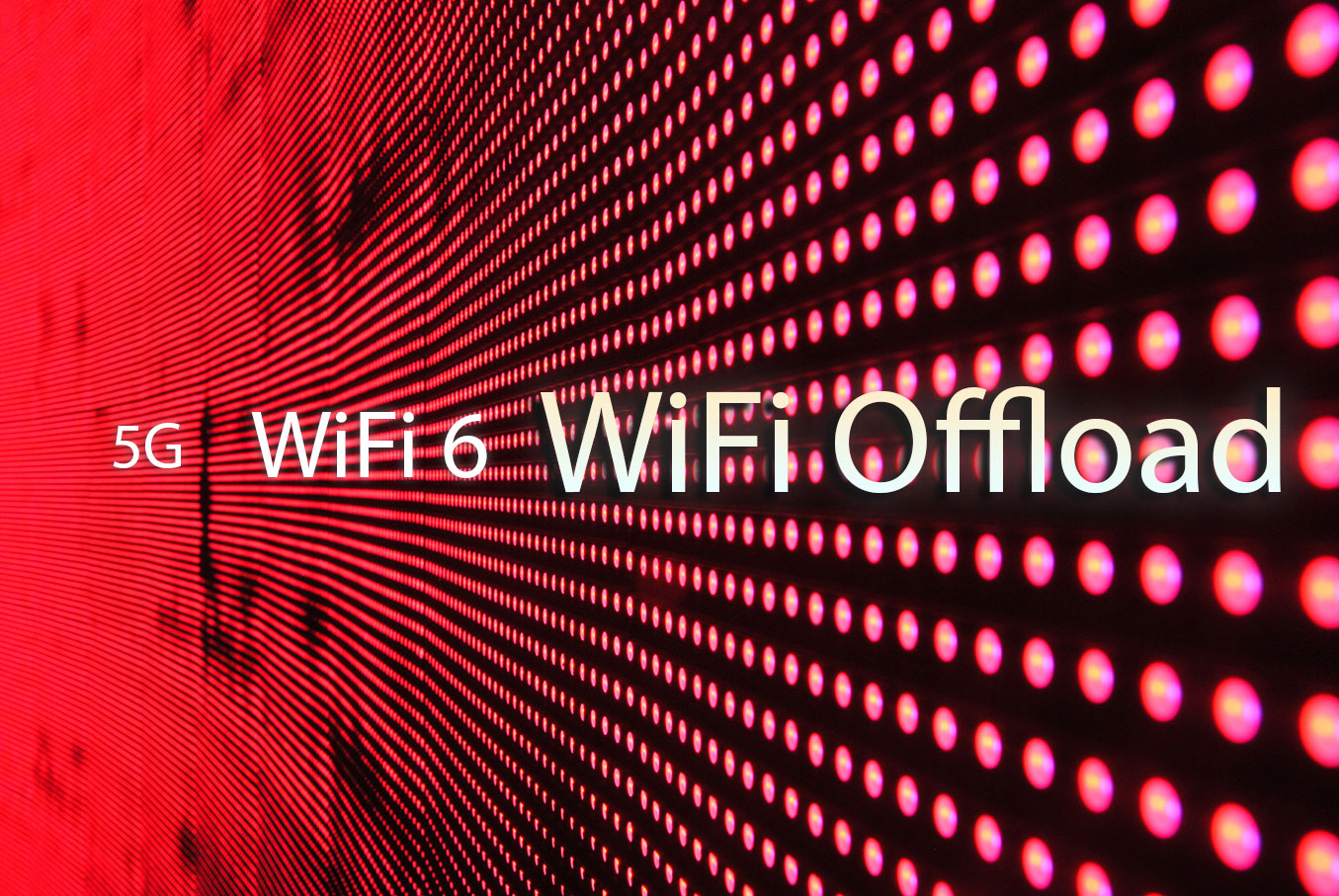Why WiFi Offloading is even more compelling in a 5G-driven world
Experience the best of both worlds through WiFi 6 & 5G
By Grace Naces and Kwang Tat Ang
Background
WiFi offloading or mobile data offloading is not new; it has been around for almost a decade. This solution occurs at the device level when it switches from a cellular connection to WiFi or small-cell access (e.g., mobile traffic is offloaded to public hotspots, enterprise or residential WiFi networks). Since the early 2000s, service providers have been offloading data traffic from dual-mode devices that support cellular and WiFi connectivity to ensure continuity of quality service for their subscribers. Customers benefit from enhanced network experience, and WiFi Offloading helps Carriers improve network quality, especially in areas with inadequate mobile coverage.
The ever-increasing demand for data-heavy content brought in by the deluge of mobile and connected devices and video apps has been a constant operational headache for service providers over the years. This, however, may change with the impending dawn of 5G and the arrival of WiFi 6 technology.
5G & WiFi 6: Can we have the best of both worlds?

5G promises increased download speeds, extremely low latency performance, and reduced congestion on mobile networks. The advent of 5G brings in more exciting applications like Augmented Reality (AR), Autonomous Vehicles, and even more connected IoT devices. More devices, from low-end to high-end, are now supporting 5G. Today’s typical mobile user’s consumption of bandwidth-heavy content such as on-demand video streaming and gaming tells us that with 5G, things are about to get even more exciting. Yet, for all the possibilities that 5G may bring, as always, there are also limitations to consider. For example, 5G is expected to have worse indoor coverage issues because of its higher frequency. Instead of rolling out expensive indoor 5G solutions to expand coverage, deploying WiFi access points for mobile offload is a forgone conclusion. This is where WiFi 6 technology shines to complement the 5G vision.
WiFi 6 has started spreading across the world, with the USA leading the way in adopting this technology. WiFi 6 has fewer interference issues than 2.4/5GHz, low latency, improved capacity, and the ability to support more devices. It is at similar affordable price levels as previous WiFi standards, and easier to deploy compared with indoor BTS solutions. This means that WiFi 6 shall be the new default indoor wireless solution and will be a more cost-effective solution for providers to relieve data traffic congestion.

The new WiFi 6 standards also have technological advancements found in LTE and 5G transmission standards. WiFi 6 uses orthogonal frequency division multiple access (OFDMA) to increase transmission efficiency, and it also adds multi-user multiple input multiple output (MU-MIMO) in the uplink.
Together, 5G and WiFi 6 represents the best of both worlds, which makes WiFi offloading even more compelling now. With many countries pushing their Smart City and Internet of Things (IoT) initiatives, it is vital to have excellent connectivity to achieve these goals. Machine-to-machine communications will grow exponentially, as will personal telecommunications for work or leisure. For example, machines in smart factories, healthcare monitoring solutions, autonomous vehicles, and smart home devices need uninterrupted connectivity for a seamless workflow.
ANTlabs patented intelligent mobile offloading solution: High-Performance 3GPP AAA, DHCP, DNS

ANTlabs provides scalable and intelligent next-generation WiFi offloading via existing WiFi and WiFi 6 technology. Our high-performance 3GPP AAA, and DDI (DHCP/DNS/IPAM) Carrier solutions have been built with over two decades of R&D and extensive field experience to deliver a suite of reliable and scalable platforms available in an appliance, virtualized or NFV variants.
In 2019, as a testament of ANTlabs’ continued innovation and R&D, the US Patent and Trademark Office granted ANTlabs the patent for Intelligent Mobile Data Offloading. This patent relates to offloading mobile data on end-user devices to WiFi networks. This technology’s fundamental value proposition is to ensure that devices unloaded to the WiFi network receive enough network quality for good network usage experience.
In addition to the patent, to handle the massive increase in mobile offload authentication requests, ANTlabs deploy three unique ways to overcome critical issues:
- Smart EAP-SIM Re-authentication to reduce load towards HLR/HSS
ANTlabs Smart EAP-SIM re-authentication mechanism limits the number of transactions that the HLR/HSS shall receive by still maintaining the complete Full EAP-SIM authentication from UEs perspective. This mechanism drastically limits the number of transactions that the HLR/HSS shall receive for authentication. With this mechanism, in one hour, a single instance of ANTlabs Tru’Auth AAA can handle 1.5 Million login subscriber sessions and up to 2000 TPS.
- Thwart WiFi-based IMSI snooping and increase security
ANTlabs Tru’Auth AAA deploys using a “conservative” peer mechanism wherein the Permanent Identity translation to the Pseudonym Identity is handled dynamically and in real-time, thereby thwarting WiFi-based IMSI snooping.
- Control authorization based on the device after authentication by certificates
For devices without SIM Cards, Certificates are the alternatives to simulate the seamless authentication. EAP-TLS/EAP-TTLS uses certificate-based authentication to authenticate the user. However, unlike SIM Cards, the certificates can be shared among different users, thereby compromising unique user identification. ANTlabs Tru’Auth AAA employs additional security mechanisms to authorize based on the user’s device and the certificate-base authentication. Carriers can then uniquely identify each user like SIM-based authentication through this.
Furthermore, Tru’AUTH AAA is future-proof as it also supports EAP-AKA authentication with different caching considerations compared with EAP-SIM authentication. It supports Diameter protocol that will streamline the interface to the mobile core networks.
ANTlabs Tru’Auth AAA is also Hotspot 2.0 ready. Onboarding mobile users for the Carrier’s WiFi network is more convenient with the Hotspot 2.0 OSU (Online SignUp) server in our Tru’Auth AAA solution suite. Besides the onboarding of local subscribers, Carriers and WiFi Service Providers can offer seamless onboarding and roaming services for foreign mobile users to join the WiFi network, thus, increasing WiFi offloading traffic.
Conclusion
5G and WiFi 6 are expected to interoperate and interweave seamlessly in future wireless networks, allowing Carriers to meet mobile data capacity demands at breakneck speed. As the world welcomes 5G, WiFi offloading becomes even more crucial as it will provide ubiquitous indoor coverage at a fraction of the deployment cost of 5G. This makes mobile data offloading more compelling to seal the gap between network availability and consumer demand.
ANTlabs helps customers optimize the business value-chain from an end-to-end perspective. Our solutions range from the agile deployment of IoT (Internet of Things) devices and network services in homes and offices to network visibility and monitoring for remote troubleshooting and network problem resolution of network access equipment.
Read more about ANTlabs Intelligent Mobile Data Offloading
Header image by Pixabay from Pexels
Other images by fauxels, Edward Jenner and Anna Shvets

